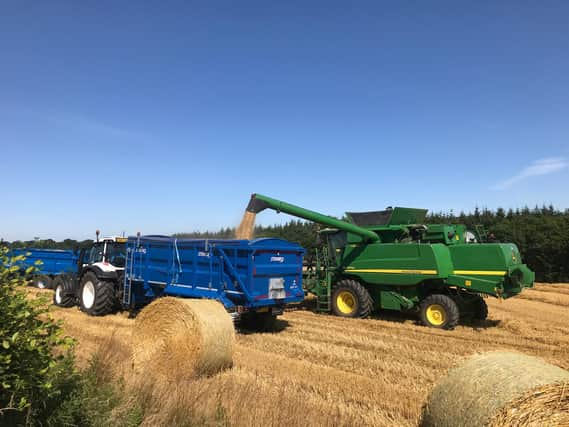Climate warning over lastest threat to harvesting


In the latest water scarcity report issued by the Scottish Environment Protection Agency (SEPA) – areas in the Highlands recently saw their drought status raised to ‘significant scarcity’, while several areas around Scotland including the islands, were raised to ‘moderate scarcity’ and much of the rest of the country put on alert with early warning of water scarcity.
And NFU Scotland yesterday reported that members in Ayrshire, Forth and Clyde and Dumfries and Galloway regions had reported instances of grass burning up because of the continued hot and dry weather – with some farmers already feeding silage to top up grazing.
Advertisement
Hide AdAdvertisement
Hide AdThere has also been added pressure in ensuring cattle and sheep get access to water, resulting in additional costs and labour being required to cart water to livestock or moving them around. Members on Orkney and in the Highlands had also reported poor growth because of exceptionally dry conditions.
But with the Met Office now issuing a yellow weather warning for thunderstorms and heavy rain for across much of Scotland through the middle of the week arable farmers who have just started the early throes of harvest have expressed concerns that heavy storms could flatten crops that are close to combining and bring a halt to harvest.
However, despite the forecast, the union issued guidance on using water efficiently for producers abstracting and irrigating crops.
“For most areas, rain this week will be very welcome but thunderstorms and the risk of some localised flooding in parts also brings risks,” said the union’s environmental resources policy manager Sarah Cowie.
“How much rain will fall and where remains uncertain and with much of Scotland experiencing hot and dry weather over the past couple of weeks, it’s important farmers take steps to ensure the continued supply of water and avoid disruption.
She said that farmers with high value crops such as potatoes, vegetables and soft fruit were being encouraged to irrigate only as much as was absolutely necessary.
“When irrigating your land, check equipment isn’t leaking, don’t overspray, and use trickle irrigation where appropriate. You could also stagger abstractions with other operators in your catchment area, reduce the volume used and irrigate at night where possible.”
And she added that those who were irrigating should also consider switching to using groundwater rather than river water in times of water scarcity.
Advertisement
Hide AdAdvertisement
Hide Ad“If you would need a new borehole to do this, your local SEPA office will be able to help and advice,” she said.
“As well as this, you can keep up to date with SEPA’s water scarcity situation report, which is published every Friday morning in times when there is a high risk of water scarcity. This week’s report will be an early indicator of any impact that this week’s rain may have had.”
Comments
Want to join the conversation? Please or to comment on this article.